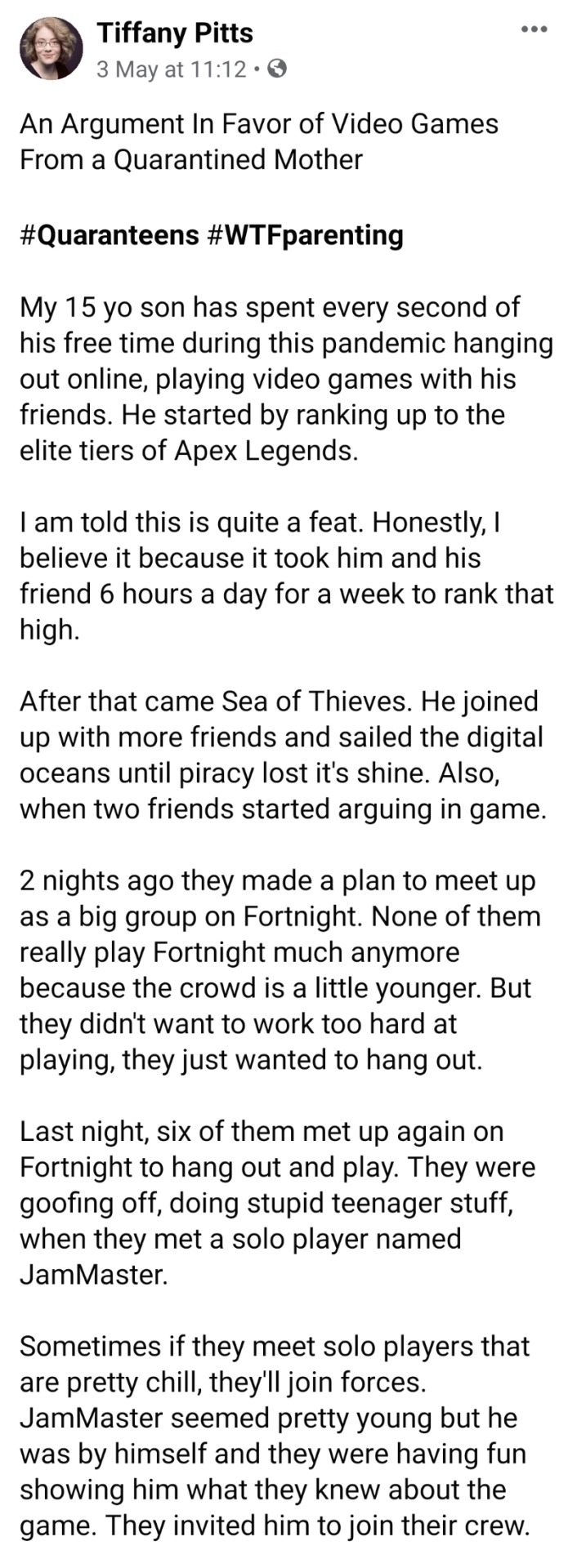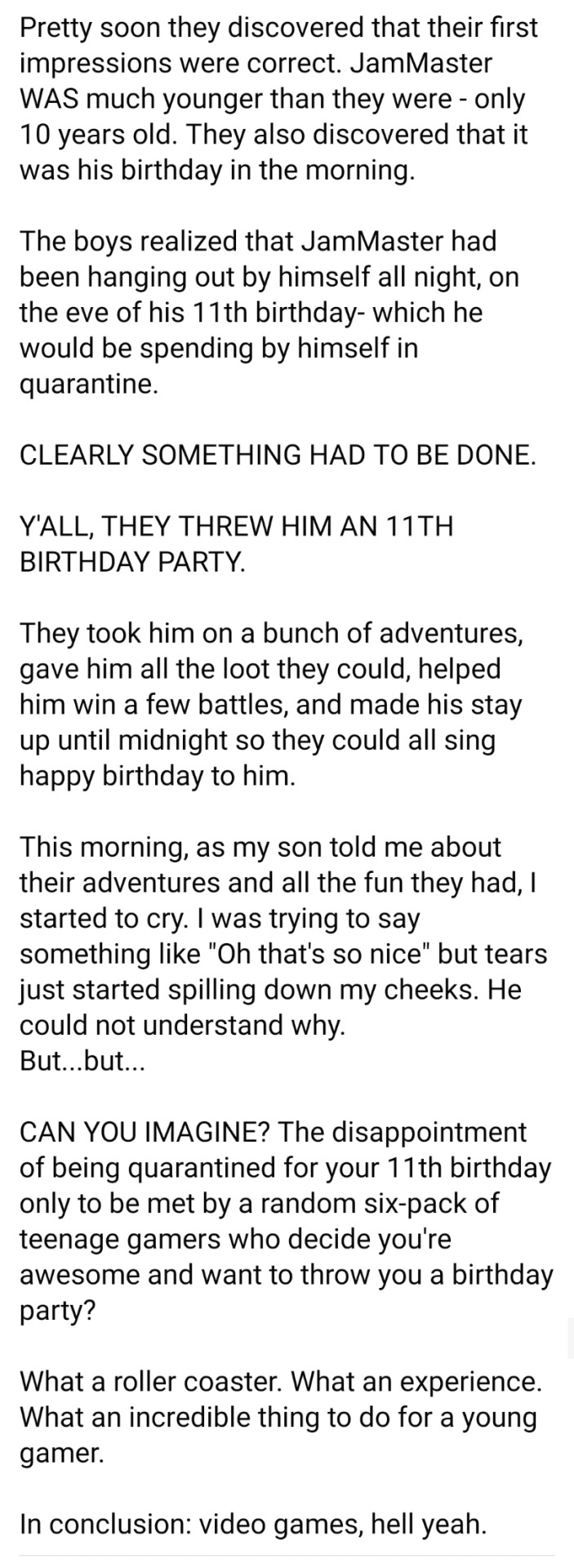Text
ART 311 - May 30, 2020 The Heroes’ Journey Again
I’ve been rereading The Name of the Wind, which is what I’m basing my Assignment #2 essay on, and I’m again blown away by Patrick Rothfuss’ poetic writing style. Ignoring issues that I have with some of his characters or themes, he uses words so purposefully that it feels as though not a single word is used in excess to what he needs to convey subtle meanings, emotions, and lore. Kvothe’s journey from just another kid in a travelling Adema Ruh caravan to becoming a musician and wizard of infamy and legend is a pleasure to read, even if it is for the 15th+ time. He never ignores the call to action if he is aware of the call; he has believable flaws, especially social flaws which are because of his youth and inexperience; his successive list of mentors are all extremely influential on his development in some manner, no matter for small or insignificant it may seem at first Rothfuss eventually reveals what important effect they had. The only major gripe that I have with this book and its sequel is that it succumbs to the ‘Mary Sue’, or ‘Gary Stue’ for males, trope of an excessively competent character. There is emphasis on how much he struggles for his rewards at times, and I realize that this excellence is actually a major part of some underlying themes for the trilogy as a whole, but I wish he struggled a bit more.
6 notes
·
View notes
Text
May 14, 2020: Book Recommendations
I just wanted to throw a list of fantastic novels and series out there into the ether of the internet on the off chance it helps someone discover a new beloved author or character! I also want to note that some of the below novels or series do have issues with them and as such aren’t appropriate for all age groups. Here goes, listed in no particular order:
The Wheel of Time Series, by Robert Jordan and Brandon Sanderson; young adult+, high fantasy, world building, excellent imagery, complexity, foreshadowing, intrigue
The Stormlight Archives, by Brandon Sanderson; young adult+, sword and sorcery fantasy, world building, excellent imagery, complexity, foreshadowing, intrigue, Cosmere anthology
The Foundations Trilogy, by Isaac Asimov; young adult+, science fiction, awe-inspiring, foreshadowing, contemplative
The Sword of Truth Series, by Terry Goodkind (content warning: there’s an unfortunately excessive amount of violence against women in these books. While I recommend the series because the overall plot and writing is great, it isn’t for everyone); mature, sword and sorcery fantasy, politics
Contact, by Carl Sagan; hard science fiction, excellent imagery, awe-inspiring, mathematics, STEM, contemplative
Redwall Series, by Brian Jacques; kids+, low fantasy, animals
Kingkiller Chronicles, by Patrick Rothfuss (content warning: some themes in here aren’t for all ages); young adult+, sword and sorcery fantasy, world building, excellent imagery, complexity, foreshadowing, intrigue, poetry
Green Rider Series, by Kristen Britain; kids+, sword and sorcery fantasy, horses
I, Robot, by Isaac Asimov; young adult+, science fiction, AI, short stories, contemplative
Mistborn Trilogy I, by Brandon Sanderson; young adult+, sword and sorcery fantasy, world building, excellent imagery, complexity, foreshadowing, Cosmere anthology
A Song of Ice and Fire Series, by George R.R. Martin (content warning: a fair bit of sexual violence against both men and women. Not appropriate for all ages); mature, high fantasy, world building, excellent imagery, complexity, foreshadowing, intrigue
The Runelords, by David Farland; young adult+, sword and sorcery fantasy, world building, foreshadowing
Warbreaker, by Brandon Sanderson; young adult+, sword and sorcery fantasy, excellent imagery, foreshadowing, Cosmere anthology
Ender’s Game, by Orson Scott Card; young adult+, science fiction, excellent imagery, foreshadowing
The Corean Chronicles, by L.E. Modesitt Jr.; kids+, low fantasy (not sure about this one lol), excellent imagery
This is by no means a complete list of books that I recommend, but it’s a great place to start!
#books#recommendations#fantasy#science fiction#sci-fi#high fantasy#low fantasy#sword and sorcery fantasy#series#epics#reader#reading list
1 note
·
View note
Video
undefined
tumblr
Credit: Nolan, Christopher. (Director). (2014). Interstellar [Film]. Paramount Pictures.
Here’s another, far shorter, post regarding a piece of the Heroes’ Journey narrative structure. Spoilers of the film Interstellar ahead, so be warned: SPOILERS BELOW!
I wanted to focus a little on a single scene from Interstellar which has made me break into tears each of the thirteen times I have seen it. It is specifically the “Years of Messages” scene. This is an absolutely stunning and gut-wrenching example of The Ordeal in which Cooper realizes one of his worst fears regarding the relativistic risks of his mission on his family. Matthew McConaughey perfectly acts out the instantaneous relief and happiness that Cooper feels upon seeing that his son’s alive, well, and living a life that he feels proud of; with the depths of despair at his irrecoverable loss of time in their lives following quickly on those emotions’ heels. The music, masterfully composed by Hans Zimmer, and McConaughey’s acting drags out every drop of empathy from me each and every time and makes the loss hit home with me. While there are a number of issues which preclude me from selecting it as my favourite film, this moment will always draw from a deep well of personal emotion.
It’s one hell of an Ordeal gut-punch.
2 notes
·
View notes
Text
ART 311 - May 11, 2020 The Heroes’ Journey
The Heroes’ Journey is an extremely prolific narrative structure that we see everywhere around is entertainment media. In one of my previous posts, I listed some of my favourite authors and their works which are particularly important to me because of their effective world-building and foreshadowing. Many of these authors’ bodies of work feature stories which are solidly set within the Heroes’ Journey structure, but there’s one story not listed there that I would like to focus on specifically. That would be Contact by Carl Sagan, my single favourite stand-alone novel. As it was first published in 1985 and a movie adaptation starring Jodie Foster and Matthew McConaughey being released in 1997, I shouldn’t have to worry about spoilers, but here’s a spoiler warning: SPOILERS BELOW!

The premise of Contact is relatively simple. It’s a story about an astrophysicist performing SETI (Search for Extraterrestrial Intelligence) research at an radio-telescope array who receives what turns out to be a message from extraterrestrials, first contact, and the resultant reactions . As soon as most people hear that premise, they’ll assume that it’s either an apocalyptic armageddon style story, a science fiction horror story, or some sort of Star Trek First Contact style story where the aliens come to Earth and peacefully usher humanity into a new era. This story is none of the above. Instead, it’s a breathtakingly beautiful, moving, and awe-inspiring narrative supported by hard science fiction. Hard science fiction is science fiction which is soundly routed in factual science and mathematics. Anyone who comes to know me knows that I am hardly a religious or spiritual person, in fact I’m an outright atheist, however, this novel expresses in better form than I ever could in words the sense of the numinous which I feel when I see images like that of the Eagle Nebula’s Pillars of Creation (taken by the Hubble Telescope and released to the public in 2015), when I read papers on the research done at the LHC (CERN’s Large Hadron Collider in Europe), or when I read about advancements in technology and our understanding of the universe which can be used for the betterment of our species.

There are three acts to Contact much like any traditional Heroes’ Journey narrative: The Message, The Machine, and The Galaxy.
The Message:
Our protagonist, Eleanor “Ellie” Arroway, spends her early childhood being raised by supportive and loving parents, though her father Theodore “Ted” is the most influential on her life. He is her first mentor on her Heroes’ Journey, and helps to promote and develop her love of learning. From a young age Ellie is intensely inquisitive and devours new knowledge with a voracious appetite; she becomes particularly infatuated with the constant of π , known as “Pi”. This is of particular importance, so take note, and I would argue that this is Ellie’s call to adventure and is never refused or ignored. Unfortunately, while in sixth grade, her mentor and father Ted passes away to be replaced with her step-father John Staughton who is decidedly not supportive of Ellie’s non-feminine interests. Their acrimonious relationship is an important part to her characters development, though it was difficult for me to see it when I first read this novel as a teen.
The novel proceeds quickly through her middle and high school years, primarily using these years to highlight the sexism which was (and still is to a degree) wildly rampant in the STEM fields at the time. I viewed much of this to be further motivation for our hero to pursue her goals, though now with the added motivation of proving her step-father's opinion of her interests to be wrong. Her post-secondary education furthers her love and interest of science, gives her experiences in more social pursuits (*cough* sexual et cetera *cough*), and introduces her to ETI (just look at SETI and guess), and two mentors: two role models with one also being an antagonist of sorts. All of this concludes with her graduation and employment with SETI.
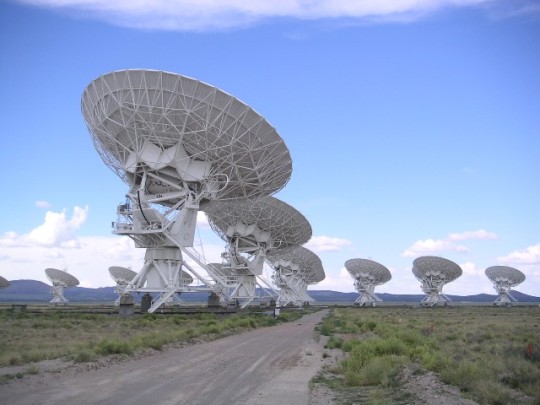
The first sign of extraterrestrial life is shown in the form Ellie discovering a repeating message of sequential prime numbers directed at Earth; this is not something that could randomly occur in nature. This is where the meat of the story begins; the crossing of the threshold. At first there’s skepticism among the scientific community, as there should be, but the message is received by unassociated and independent facilities. As the scientific community works through political channels to ensure redundant monitoring (this is set during the Cold War era) humanity is temporarily united in this realization that we’re not alone in the universe and a desire for further knowledge. This all culminates in the discovery of humanity’s first ever high-powered radio broadcast embedded in the message being returned to us, and industrial innovations and schematics needed to create a machine of unknown purpose embedded even deeper. Thus ends Act 1.
The Machine:
Tests, allies, and enemies are abundant in this part of the novel. Honestly, this is one of the most exciting parts of the entire story for me with all of the political machinations, discussions of about the new technology imparted to humanity by the extraterrestrials (nearly all of which are theoretically possible and grounded in real science), and discussions surrounding the philosophical implications and dilemmas of this new reality. I will glaze over most of it because otherwise this post would truly become a short novel in its own right.
The most important bits to take from this act (in my opinion) are the tests and enemies and approaching the inmost cave. The tests of Ellie’s dedication to following through with her life’s work in finding new funding and conquering adversity in the form of unnecessarily contrarian colleagues and critics, personal relationship, and physical and psychological recovery after a traumatic event. The enemies of this act are primarily the extremist religious and political groups which oppose the construction of The Machine and/or want to bring on the rapture, and . They ultimately destroy The Machine which is being built and funded by the government of the United States in a terrorist attack, and this appears to be the nail in the coffin of the project. The only way in which this is salvaged is through the efforts of an ally Ellie, who has a back-up machine in the works that was being used for “testing” components. The ordeal of this movie is undoubtedly the moment of activation of the machine, when the passengers and the world are witnessing the processes taking place from the opposing perspectives of the interior and exterior. The five passengers within the machine were confronting their fear of the absolute unknown considering this is a machine of foreign origin and technology never before used. Here ends Act 2.
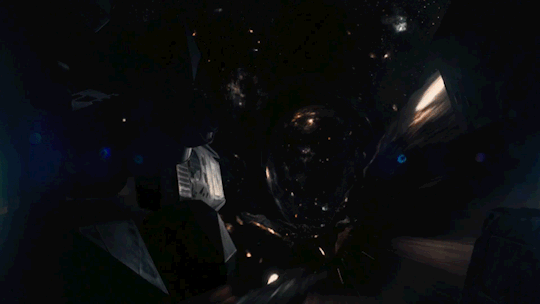
(I am aware that this is Interstellar, not Contact. I just couldn’t find a GIF from Contact)
The Galaxy:
Approaching the inmost cave is what the story transitions into after The Machine activates as the passengers pass into the wormhole network which transports them to The Station. This would also likely cover the Reward (Seizing the Sword) phase. Throughout this sequence in the novel Ellie and the rest of the passengers are getting their first real reward to years of work and dedication with The Message and The Machine, but it’s obvious to the characters and audience that they’re currently in transit somewhere which has further implications on the story/mission. The trip to the station is an endless montage of breathtaking and mind-blowing scenes showing the depth and breadth of the capabilities of the extraterrestrials. Upon arrival, the passengers experience isolation and we later learn that the extraterrestrials were inspecting their memories. They used this data to put each passenger through a highly emotional and cathartic experience which was used to teach each passenger something about themselves of value. It is also when the most beautiful and numinous piece of information is given to Ellie when she asks the alien, who has appeared before her as her dead father Ted, how they experience when they create the numinous (she learned from the alien that the aliens are currently building a freaking galaxy, Cygnus A, using Sagittarius A which is the supermassive black hole in the center of our Galaxy, and is a massively powerful source of radio signals. Already a freaking numinous feat). It answers with Pi. Imagine how this would impact Ellie. Her "discovery” of Pi was one of the most formative experiences of Ellie’s early life. Specifically, the alien states that buried in Pi’s decimals is an encoded message. Imagine. Pi is a universal constant. It is something determined by physical and mathematical relations that just exist; you can’t “build” or “encode” Pi. The alien goes on to describe how they found this message in vague detail and directs Ellie on where to look.This entire combination of phases only concludes once the passengers have returned to Earth.
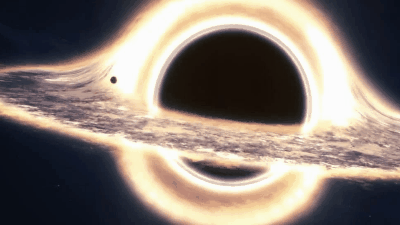
Their return could likely be classified as combination of the Roadblock phase. Upon their return to Earth, rather than Ellie and the other passengers having a triumphant and joyous return no time appears to have passed on Earth, despite them having spent hours if not days on The Station. They are questioned. There are Inquiries. Politicians and the public are furious that billions of dollars were “wasted” on something that apparently just spun up to a specific speed in place, then stopped. None of the instruments of human origin attached to The Machine recorded anything; there was no sense of movement, no great amount of time had passed just mere moments, no radiation, nothing. Eventually, all of the inquiries “determine” that it was all a big hoax perpetrated by some evil capitalist (the ally that Ellie secured funding and the backup machine from) in order to amass wealth and develop a monopoly on many of the associated technologies and emerging industries. The detection of The Message was all done via the coordination of desperate SETI scientists with this man and his satellites up in space to defraud the world. Fortunately none of the passengers are punished in any way, despite many of them having been scientists deeply involved with the discovery, decoding, and understand of The Message and the construction of The Machine.
The Return of the Elixir phase in this novel is both a phase to be celebrated and mourned. Ellie discovers that her father Ted wasn’t her biological father and that instead the man she thought was her step-father was her biological father. This is a loss of identity that she mourns deeply, but with the experience, perspective, and humility she has gained through this whole journey she is able to forgive her mother’s infidelity and come to terms with this bit of knowledge. She is also able to conduct research regarding Pi to help confirm her story regarding their journey in The Machine and discovers the message hidden in Pi’s decimals. A perfect circle. Ironic as hell and yet an absolutely beautiful impossibility thrown in by Carl Sagan that elicits a sense of the numinous in anyone I know who has read the novel. In closing, not only has Ellie’s Heroes’ Journey given her more wisdom and grace as a human, but also a powerful piece of knowledge that validates her entire experience and does the very thing scientists hunger for the most: she expanded humanity’s understand of the universe and of how much there is more to discover.

I know that that was one hell of a lot of word vomit on the blog, so if you read it all the way then thank you.
26 notes
·
View notes
Photo
Oh man, just imagine the kind of lore and stories that accompany these images!






Art of kleinerHai
334 notes
·
View notes
Text
May 8, 2020 - Storytelling with Food and Excess: Spirited Away
Just a random post here. Please note that most of what I write down in this post is subjective opinion, however, some of what I state is factual based on interviews of Hayao Miyazaki and canon publications. Since this isn’t some piece of work going out for publication, or a grade, I’ll just state the following disclaimer: I definitely took images and GIFs from places, read posts, articles and interviews, and generally melted my own thoughts in with stuff pulled from the aforementioned sources.
**SPOILERS BELOW**: There’s a substantial amount of spoiler material below so if you haven’t seen the masterpiece Spirited Away (which I very much doubt since it was released in Japan in 2001 and in North America in 2002) then this is your official warning that you should read no further until you have unless you enjoy having great movies spoiled for you.
Tumblr presented my with a random selection of content to view and the first thing that caught my eye was a GIF from Spirited Away. Oh man, if anyone ever got evoking emotion and implied meaning/messages right using food it was surely Hayao Miyazaki and the rest of the team at Studio Ghibli. There are soooooo many scenes in the Miyazaki movies which literally make me drool. I would devour all of that food like No-Face.

There’s a lot to take away from this film; it contains a relatively traditional “Hero’s Journey” plot arc, a coming of age story, and a moral cautionary / commentary tale of greed and excess. However, to a Japanese audience, or any other with kanji literacy, there’s a slightly different connotation to this message surrounding greed and excess which I will go into as well.
An important theme to Spirited Away continually emphasized throughout the film is that of the absurd excess and luxury in the bathhouse, and the damaging effects that the greed associated with these can cause. To English viewers with no knowledge of Japanese kanji, they see all of this excess and luxury aimed towards enriching a vile and morally corrupt CEO whose greed knows no bounds (the witch Yubaba). The first instance of the film showing us this theme is that in which Chihiro’s (the main character) parents come across mounds of delicious food which they devour without making too much of an effort to find the owner of the stall and ensuring they are in fact allowed to eat the food. Chihiro’s father brushes off Chihiro’s reluctance to just take whatever they want without gaining permission with the line (slightly paraphrased as I haven’t seen the movie in quite a while), “Eat up, it’ll be fine! Your daddy has credit cards and cash!” In fact, all will not be fine. Chihiro’s parents are turned into pigs as punishment for behaving as pigs, and Chihiro spends essentially the rest of the movie working to have her parents returned to their former state (though honestly part way through the movie you forget about this for a while, as does Chihiro). Central to nearly all of the important scenes in the film is food or drink of some kind. In the Studio Ghibli style, every dish is lovingly and painstakingly crafted to make theme as appealing and hunger inducing as the real food or drink would in real life. While it’s an obvious symbol of the hunger felt by the greedy for their desires, I honestly feel that it’s a better and more present symbol of the insatiable hunger of the greedy than the gold nugget currency is.


The character No-Face (a character derived from a Japanese “yokai”, or demon, of mythology known as a Noppera-bō; No-Face is not identical to a Noppera-bō in how it operates) is introduced later in the film to show the destructive nature of society whose greed is unchecked by mitigating factors, like morality and virtue. No-Face is not an inherently greedy entity, however, it learns its greed from the attendants and patrons of the bathhouse. It learns what drives each individual, primarily gold, and uses conjured gold to sate its vast hunger (greed), which it learns from those it observes. This all comes to a head in a scene where an essentially endless supply of the luxuriant food of the bathhouse is being churned out to feed No-Face and get his gold in return. As its hunger grows, No-Face is less and less appreciative of the quality and flavour of the dishes given to him. It swells in size and eventually begins to consume other spirits/creatures when rebuffed by Chihiro when it offers gold to her, going on a rampage which causes a lot of destruction. It all culminates with No-Face being healed, taught kindness and compassion, and all’s well that end’s well.

To Japanese audiences, anyone else kanji-literate, or a quick perusal of the internet for symbology in the film, there’s special meaning to the scene in which Yubaba steals characters from Chihiro’s name (which is comprised of the characters which mean “Thousand” and “Search/Seek/Fathom”, so a rough translation of her name is something like “A Thousand Questions”, describing an inquisitive nature) resulting in its change to Sen, which is Japanese for “Thousand”. In traditional Japanese culture, there’s a deep belief that one’s name defines one’s nature. Therefore, aside from changing her name, Yubaba also changes Chihiro’s nature. Aside from this function, this is part of Miyazaki’s commentary on the havoc and damage which Capitalism has, and further could, wreck upon Japanese values and tradition (Miyazaki has previously compared modern society to the sex industry, which has led to some theorists thinking this movie is more a commentary/warning on child prostitution/sexualization).

I know that I skipped a bunch of subplots from the film, but the food compelled me!
8 notes
·
View notes
Text
ART 311 - May 6, 2020 Additional Posting
Tagging on to my first post, I have been gaming for over twenty five years and have been exposed to virtually every kind of storytelling that is present within the Video Game industry. Linear or branching structure, supported by a given or built narrative, and a multi-player or single-player experience. I have played games from any classification you can think of and found delivery methods which work and those that don’t. Compare these games: FreeSpace 2, Freelancer, No Man’s Sky, and Tachyon: The Fringe. They’re all spaceflight games.
FreeSpace 2 is a linear, spaceflight combat simulator. To me, this was and is still the single best linear story game that I have ever played (this opinion takes into account things outside of narrative though, like how I can’t play horror games because I jump to easily; if this weren’t the case, Thief II: The Metal Age may have been a contender for that spot). It had an extremely engaging story which was all translated expertly on a “need-to-know” basis via the mission briefings and de-briefings, and in-mission transmission between mission control, your wingmates/escortees, and yourself. The rest of the game was you being a bad-ass pilot and protecting some stuff while blowing the living hell out of other stuff. For its time, the graphics were phenomenal and the scenery (whether open space or a shrouded nebula) beautiful. The accompanying soundtrack took players on an emotional roller-coaster ride entirely appropriate for every scene you played through and was truly breathtaking. Honestly, the music of that games can still bring tears to my eyes in the right moment. The game, as a whole, succeeded at its storytelling because of all of these elements combined, and because it made you feel as though you were directly responsible for the success of missions through leadership (ability to command wings to secure/destroy/protect objectives) and skill, and your character was rewarded with commendations and promotions to reinforce that feeling.
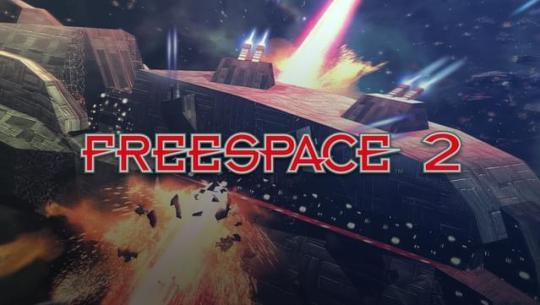
SPOILERS AHEAD: I know the game is now twenty-one years old, but in case I have inspired anyone to try it out through GOG.com I wanted to warn of spoilers. Despite this being a linear style of narrative, this game still provided me with my first truly “influential” player choice in my video game experience which directly influenced how the final mission ended. In the final mission, the bad guys of the series are causing a sun to implode and cause a resulting supernova to destroy a system. Your mission is not to destroy the ships causing this to happen, but to escort the relief fleets evacuating all civilized life from that system from their entry into the system to the jump-point out of the system in a given time-frame. When you begin to near the end of the mission you’re presented with two options: you can either choose to burn hard to the exit saving who you can and escaping yourself or stay back and protect the stragglers, getting them through and failing to escape yourself. Either way, so long as you saved the primary escortees, you complete the mission and are presented with an ending cinematic. However, if you chose to remain behind and sacrifice yourself the cinematic that you are presented with is in a tone of subdued jubilation, the narrator mourning those who sacrificed themselves for their victory of escape. You won either way, but if you sacrificed your character this cinematic stirred a lot of real and deep emotions. END OF SPOILER.
Freelancer is a third-person, spaceflight RPG, with a core story line which was a semi-linear and semi-branching in nature. It was linear in that you had to complete various core missions to progress to the next phase of the game, but it it was branching in that what you did in between to advance to those transition missions was entirely up to you; you could become a mercantile behemoth, a pirate, a military officer, a smuggler, or a mercenary. There was expansive lore in the game outside of the core missions for you to discover, a variety of ships and weapon loadouts for you to choose from which affected the difficulty, and occasionally the lore, of the game universe. When comparing space games, this is easily my favourite RPG style space game that has a story to it (Star Citizen, EVE Online, and Elite: Dangerous don’t qualify because while they may have goals you can aim for, there isn’t really an overarching story in them). The story itself gets characters emotionally invested in the game’s universe, and uses pretty darn good foreshadowing in several instances.

Tachyon: The Fringe is a mechanically excellent game, but it falls far short of the excellence of FreeSpace 2. It is another primarily linear story line, though you are given the choice of choosing a faction to support, which just determines which of two linear paths you will follow. The writing of the story’s structure leaves much to be desired, though it must be credited with being fairly compelling despite this. It’s also presented in the lac-luster manner of job board postings. There are side missions that can be completed, however there’s little variety and zero bearing on the main story. The soundtrack is of middling quality and doesn’t inspire nearly the emotional response of FreeSpace 2′s masterpieces of composition. Not much more I can say about this game other than, “It was meh”.

No Man’s Sky is infamous within the gaming community, and for good reason. It was promised to be the most expansive sandbox game ever created, with diverse ecosystems on procedurally generated planets, whose fauna was also to be generated using this procedural process and as a result be unique, have a deep story that players uncover pieces of the story as they travel towards the center of the galaxy only to be thrown into a much more expansive story when you get there, and be actively multiplayer (but were told it’d be super unlikely you’d run across any other players)! Except it was nearly nothing like it was promised. The planets weren’t unique, the animals were all similar, and the story was dull as all hell, and when two players coordinated over stream to get to the same location on a planet, they couldn’t see each other (multiplayer wasn’t in the game). The story of this game relied on information dumps on the players at uncontrolled intervals, and there was nothing present within its content or delivery which gave players any reason to care about or engage with the “main story”. This was a branching narrative “sandbox” game which failed for a variety of reasons at launch, but story wise it failed because it didn’t catch the players’ interest.
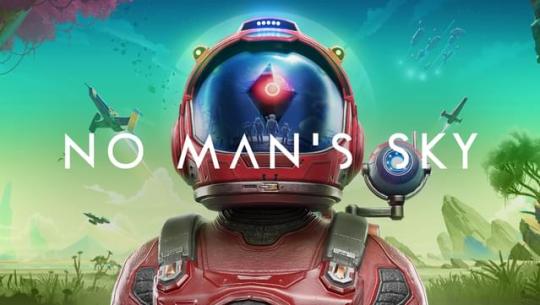
If you made it through all of this, good on you!
3 notes
·
View notes
Text
ART 311 - May 6, 2020 Post
Well, I am certainly no stranger to storytelling.
I have been an avid reader my entire life. While I will read non-fiction, fiction, and bibliographies, I certainly tend more towards the Fantasy, Science-Fiction, and History genres. The world of Middle Earth was an early introduction to me to the world of Fantasy and it lead to a deep love for other Tolkien-esque worlds and narratives. Personally, the greatest example of awe-inspiring storytelling comes from the The Wheel of Time by Robert Jordan. Jordan was obviously influenced by Tolkien’s world building; he took it, made it his own, and brought it to an entirely new level. At fourteen books deep and an average page count of eight-hundred and twenty-six, The Wheel of Time series is extremely daunting to most readers. However, I would highly recommend that everyone take the time and effort to read through this series, over whatever span of time it takes you, because everyone can learn about effective and intricate storytelling from Jordan’s work. His foreshadowing is masterful to such a degree that I have only read four other authors who come close in comparison: Isaac Asimov in his Foundations and Empire trilogy, George R.R. Martin in his A Song of Ice and Fire series, Brandon Sanderson in his Cosmere anthology, and Patrick Rothfuss in his Kingkiller Chronicle trilogy.
In my opinion, world building and foreshadowing are the two greatest tools in a writer’s repertoire for creating stories which are deep in their meaning and breadth, and immersive enough to make their audience feel as though they have only need of closing their eyes and they could step into the author’s world.
2 notes
·
View notes
